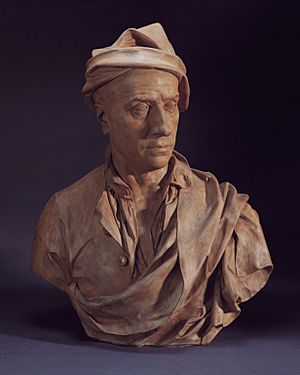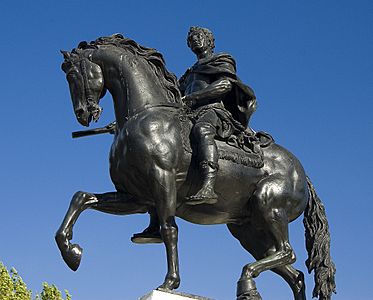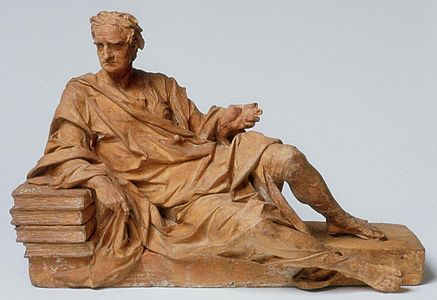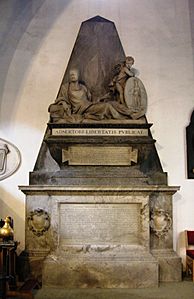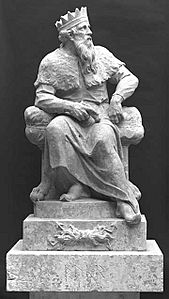John Michael Rysbrack facts for kids

John Michael Rysbrack (born June 24, 1694 – died January 8, 1770) was a famous sculptor from Flanders. He spent most of his working life in England. There, he became one of the most important sculptors of his time. He created many monuments, decorations for buildings, and portraits. His art style mixed the grand Baroque style of Flanders with classic Greek and Roman influences. Rysbrack ran a busy workshop that greatly influenced how sculpture was made in England.
Contents
Early Life and Family
John Michael Rysbrack was born in Antwerp on June 24, 1694. His father, Pieter Rijsbraeck, was a landscape painter. His mother, Geneviève Compagnon, was French. John Michael likely learned his craft from a master sculptor named Michiel van der Voort the Elder between 1706 and 1712. He joined the Guild of St. Luke in Antwerp, a group for artists, in 1714.
Many of Rysbrack's brothers were also artists. His older brother, Pieter Andreas, painted still life pictures and landscapes. His younger brother, Gerard, painted still lifes, hunting scenes, and mythological scenes. John Michael and Pieter Andreas moved to London around 1720 and became very successful. Gerard later joined them in England.
A Leading Sculptor's Career
When Rysbrack arrived in London, he quickly became the top sculptor. He held this position until the mid-1740s and remained one of Britain's best sculptors until he died. He had a large workshop with many helpers, including other sculptors from Flanders.
Rysbrack created lifelike portraits and grand monuments. People quickly sought after his work. He made busts (sculptures of heads and shoulders) and monuments for many important people of his time. These included the monument for Isaac Newton in Westminster Abbey and a statue of Marlborough. He also made busts of famous figures like Walpole and Pope.
In 1733, Rysbrack carved a magnificent marble bust of George Hamilton, 1st Earl of Orkney. This bust showed Orkney as a Roman soldier. Lord Orkney was a respected general who fought alongside the Duke of Marlborough. He was part of many important battles, including the Battle of Blenheim in 1704. The bust of Lord Orkney is considered one of Rysbrack's greatest works. You can see it at the Victoria and Albert Museum in London.
Rysbrack also created a splendid monument in St Michael and All Angels Church, Badminton. This monument, made in 1754, shows the 2nd and 3rd Duke of Beaufort dressed in Roman style. One duke is standing, and the other is sitting on a stone coffin, holding a medal.
In 1733, Rysbrack also cast the large bronze equestrian statue of William III in Queen Square, Bristol. He also sculpted a later monument for Edward Colston in All Saints' Church, Bristol.
Later Life and Death
John Michael Rysbrack died in Vere Street, Westminster, in 1770. He was buried in St Marylebone Parish Church.
Gallery of Work
-
Inigo Jones, Chiswick House, London
-
Model for the tomb of Sir Isaac Newton, Victoria and Albert Museum
-
Hans Sloane, British Library, London
-
Marble bust of William III, around 1736, Yale Center for British Art, New Haven, Connecticut
-
Tomb monument for Sir Watkin Williams-Wynn, Ruabon, Denbighshire, erected 1755
-
Thuner, originally in the gardens Stowe House now at the V&A Museum, London, England
Images for kids
-
Newton's tomb monument in Westminster Abbey by Rysbrack
See also
 In Spanish: John Michael Rysbrack para niños
In Spanish: John Michael Rysbrack para niños


